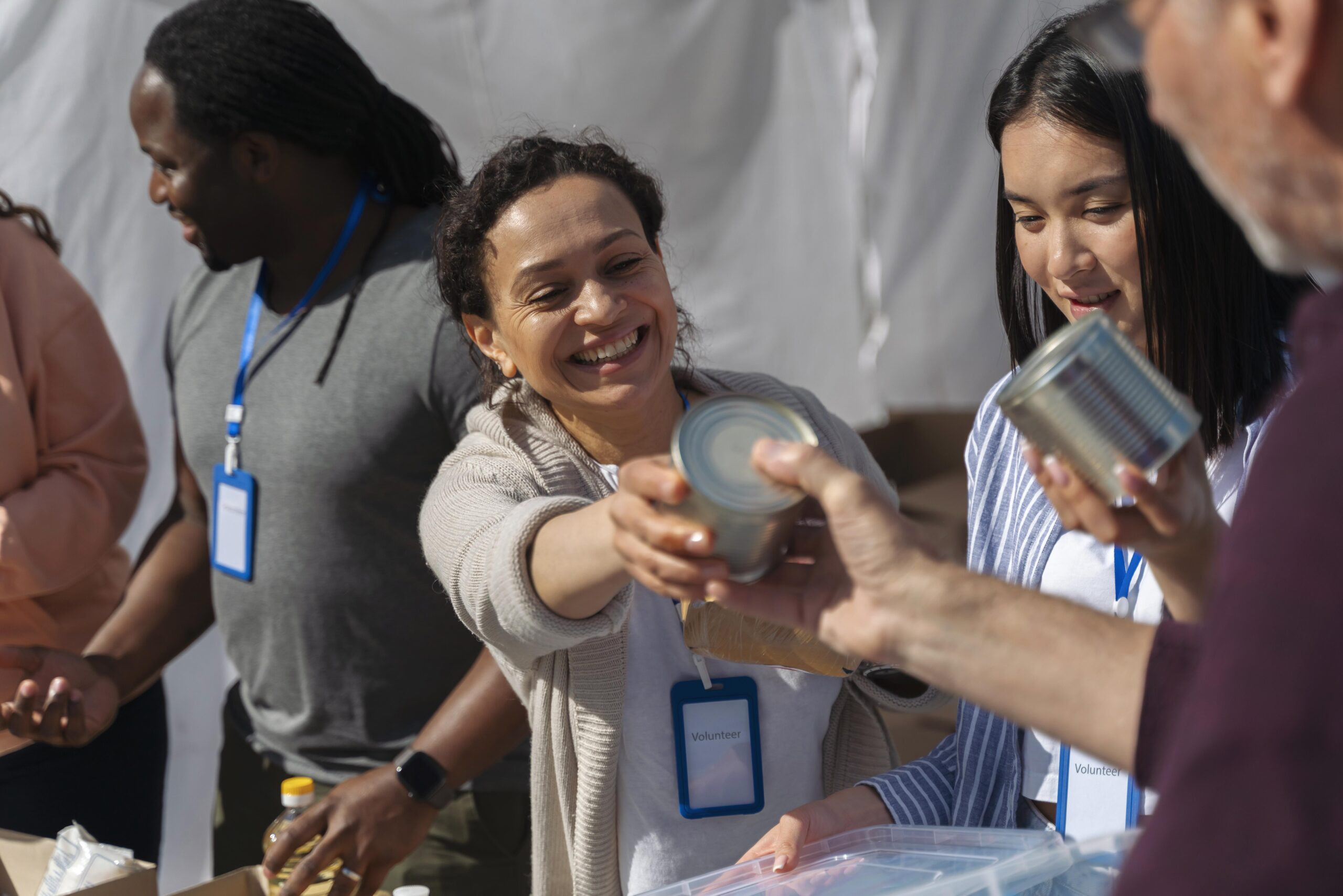Food Insecurity During the Covid-19 Pandemic: Looking Beyond the Statistics
By: Northern Virginia Health FoundationAs COVID-19 forced school shutdowns, business closures, and other major life disruptions, many residents living along Fairfax County's Route 1 Corridor saw their food budgets stretched to a breaking point. Marissa, a single parent of three, was shocked after she swiped her card at the grocery store and saw that she didn’t have enough to purchase the items in her cart. It was “embarrassing,” she recalled.
Marissa often planned what she would get during her grocery trips, relying on discounts, reward programs, and benefits from the Supplemental Nutrition Assistance Program to maximize her budget. But when the pandemic hit, she had to leave her job to stay with her children, which affected her usual budgeting. “I didn’t realize that I was spending more money because they were eating at home, as opposed to going to school,” she said.
To ensure she could feed her family, Marissa reevaluated her budget and relied more heavily on the Lorton Community Action Center for food assistance. She also started receiving relief funds through the Pandemic Electronic Benefits Transfer program. Despite these critical supports, the moment at the checkout line still holds tremendous weight, she says. “I’m very paranoid about spending the money, because I don’t want to be in that situation again.”
In Fairfax County, approximately 58,000 residents were food insecure prior to the pandemic, the most in the Commonwealth. That number is estimated to have doubled in the last year.
For many residents, like Marissa, who were already economically vulnerable, the pandemic made day-to-day living challenging in ways that are hard to convey through numbers. Arcadia Center for Sustainable Food & Agriculture documented those stories in their recently released Route 1 Lived Experiences Report.
Arcadia hopes that the real-life stories of County residents will better inform decision-makers about the needs in the community and help shape solutions for a stronger regional food system.
Real-life stories
The Route 1 Lived Experiences Report shares the stories of 15 residents living along the Route 1 Corridor, one of Northern Virginia’s “islands of disadvantage.” In these clusters of neighborhoods, residents face multiple challenges, including poverty, lower levels of education, unaffordable housing, and lack of health insurance. The pandemic made matters worse, dramatically increasing the number of residents in need of emergency food aid. The report examines residents’ varying experiences with food insecurity and the choices they were forced to make because of the pandemic.
Maria, a Hispanic woman from the Audubon community, lost her job and didn’t apply for federal nutrition benefits because she feared that doing so would jeopardize her and husband’s pending citizenship.
Manuel, who lives in the Hybla Valley community with his wife and three children, had his hours as a taxi-driver cut. His family relied heavily on canned items from local food distributions to make their fresh food purchases last longer.
Joanne, an African American woman in her fifties, had to quarantine without sick pay because of COVID-19 exposure at work. Due to reduced income, she couldn’t afford her apartment and had to move to a complex with lower rent.
These stories show us that food insecurity doesn’t impact everyone the same way, and that it doesn’t have one solution either, says Terri Siggins, Project Manager for Arcadia’s Live, Eat, Grow, Route 1 Initiative, a collaborative funded by the Northern Virginia Health Foundation.
“Families face all types of challenges that are easy to miss if you just look at aggregate data. Food issues are complicated by lack of childcare, employment, housing, access to health care and many other factors,” Siggins said. “We wanted to give the voice to the community to name their needs because oftentimes they are left out of that conversation.”
Arcadia partnered with more than a dozen local non-profit and government organizations to recruit the participants and reached out to fellow members of the Route 1 Corridor community to conduct the interviews.
With funding from the Foundation, Arcadia was able to spend time seeking out Spanish-speaking interviewers, translate the conversations, and compensate everyone for their time.
Hidden complications of food insecurity
Some of the report participants, like Kofi, a West African man living in the Stony Brook community, talked about the web of complications behind food insecurity that aren’t often acknowledged, such as the lack of culture-specific or fresh produce at food pantries or limited transportation options to get groceries.
A big challenge for recent immigrants is the lack of help available to them, says Juan Pablo Echeverria, one of the report interviewers.
Recounting one interview he conducted with Camille, a woman whose husband left her during the pandemic, he recalled how she couldn’t earn any income because of her immigration status, and she had no one to turn to for any support.
“If you’re undocumented and you can’t receive any government funding, and you moved here without any family… it’s a good reminder that there is a total lack of safety net for a lot of people in our community,” Echeverria said during a webinar held by Arcadia.
Some families the interviewers spoke with were often only a few dollars away from qualifying for federal support or relied heavily on credit cards to buy groceries.
Moving forward to promote food security
The report authors offer several strategies for building a food secure environment along the Route 1 corridor, including increasing data collection efforts, developing a comprehensive equity food plan, and considering what equitable public transportation and walkability plans would look like for the Corridor.
“While emergency food assistance is critical to helping ensure that people are able to feed themselves and their families, it is a band-aid approach that provides only temporary relief,” Siggins said. “The goal is eliminating the need, but we will only get there by identifying the systems that perpetuate food insecurity, dismantling them and working together to recreate new, more equitable systems in their place.”
Read the report, Route 1 Lived Experiences Report: Food Insecurity During the COVID-19 Pandemic.

